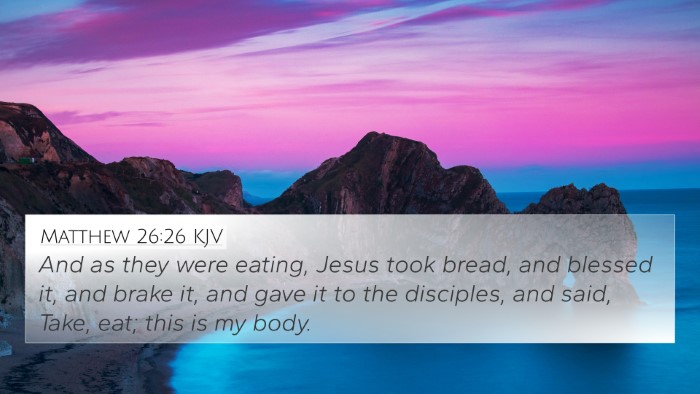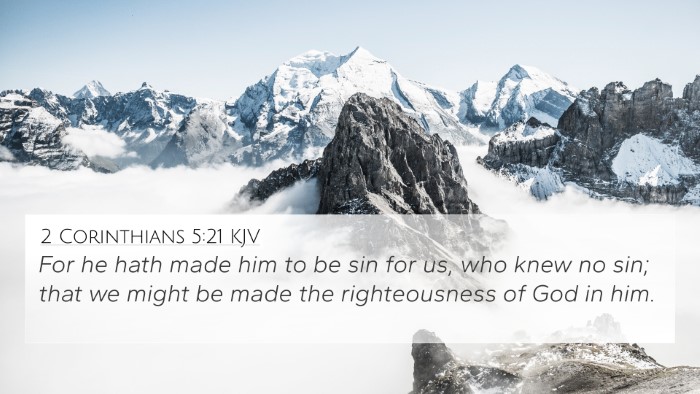Ezekiel 45:22 - Verse Meaning and Interpretation
Ezekiel 45:22 reads:
"And on that day shall the prince prepare for himself and for all the people of the land a bullock for a sin offering."
Summary of Insights
This verse is part of Ezekiel's prophetic vision concerning the future temple and the restoration of proper worship among God's people. Ezekiel provides detailed instructions about offerings, emphasizing the importance of sin offerings made by the prince on behalf of the people.
Commentary Analysis
Matthew Henry's Commentary
Matthew Henry observes that the 'prince,' likely referring to a leader or a messianic figure, assumes a vital role in atoning for the sins of the people. Henry notes that this act symbolizes not only personal humility but also responsibility toward communal sin, reflecting a pivotal aspect of priestly intercession. The use of a bullock indicates a significant offering, illustrating the seriousness of sin and the necessity for atonement.
Albert Barnes' Notes
According to Albert Barnes, this verse highlights the importance of atonement and the collective responsibility of the leaders for the sins of their community. Barnes emphasizes that the prince's preparation of a sin offering serves as a reminder of the need for divine mercy in the face of human imperfection. The sacrificial system, he suggests, is crucial for fellowship with God, establishing a connection that points to the greater sacrifice of Christ in the New Testament.
Adam Clarke's Commentary
Adam Clarke elaborates on the significance of the sin offering prescribed in this verse. He remarks that the act of the prince bringing a bullock for a sin offering symbolizes the gravity of leading a people and the weight of sin that rests upon them. Clarke draws parallels between this act and the role of Christ, who is our ultimate high priest and sin offering, indicating an inter-biblical dialogue that connects the Old Testament sacrificial system to the New Testament fulfillment.
Thematic Connections in Scripture
This verse can be connected to several other Bible verses that illustrate themes of sacrifice, atonement, and leadership. Below are some key cross-references:
- Leviticus 4:3-12: Details the process of sin offerings, highlighting the significance of sacrifice.
- Isaiah 53:5: Prophesies the suffering servant, emphasizing the redemptive purpose of suffering.
- Hebrews 10:4: States that the blood of bulls and goats cannot take away sins, leading to the need for a better sacrifice.
- John 1:29: John the Baptist calls Jesus the Lamb of God, symbolizing the fulfillment of sacrificial offerings.
- Romans 3:25: Highlights Jesus as a propitiation for sins through faith in His blood.
- 1 Peter 2:24: Refers to Christ bearing our sins in His body on the tree, tying into the theme of atonement.
- Hebrews 7:27: Notes that Christ does not need to offer sacrifices daily as the high priest did, as His sacrifice was once for all.
Understanding the Importance of Cross-Referencing
Cross-referencing Bible scriptures not only enhances our understanding of a particular verse, like Ezekiel 45:22, but also creates a richer and more integrated perspective of biblical teachings. Here are some tools for Bible cross-referencing:
- Bible concordance: A reference tool to locate verses related to specific keywords.
- Bible cross-reference guide: Many versions of the Bible include cross-references in the margins.
- Cross-reference Bible study: Approaching scripture with an eye for connections can deepen comprehension.
- How to use Bible cross-references: Engaging with multiple verses can unveil previously unnoticed themes and teachings.
Conclusion
In Ezekiel 45:22, we see a vivid representation of the need for atonement and the role of leadership in spiritual matters. This verse, when cross-referenced with others in the Bible, reveals the underlying connections between the Old and New Testaments, emphasizing the timeless aspects of God's plan for salvation. Understanding these connections can lead to profound insights into the nature of sin, sacrifice, and redemption.
Additional Resources for Study
For those seeking to explore more about cross-referencing and thematic analysis, consider utilizing:
- Bible chain references: Systems that link related verses for easy study.
- Comprehensive Bible cross-reference materials: Books and software designed to deepen biblical research.
- Cross-referencing Bible study methods: Techniques that guide readers in identifying connections throughout scripture.






